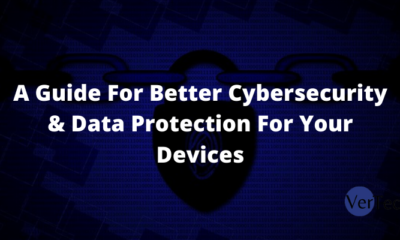Security
How to Easily Monitor Online Children Activity

In this digital age, children spend a significant amount of time online, whether it’s for school assignments, entertainment, or socializing. While the internet offers numerous educational and entertainment opportunities, it also comes with risks. As a responsible parent or guardian, it’s essential to strike a balance between allowing your children to explore the online world and ensuring their safety. This blog will guide you through the process of easily monitoring your children’s online activity to keep them safe and informed.
Setting Up a Safe Digital Environment
In today’s digital age, creating a secure online environment for your children is the first step in responsible parenting. As children increasingly rely on digital platforms for education, entertainment, and social interactions, it becomes crucial to establish a strong foundation for their online safety.
Begin by configuring age-appropriate content filters and privacy settings on the devices your children use. These settings can help shield them from encountering inappropriate content and potentially harmful websites. Make informed choices about the websites and applications they have access to, opting for those designed with child safety in mind.
Open Communication and Education
Open and honest communication serves as the cornerstone of effective online monitoring. Engage your children in conversations about their online activities regularly. Create an environment where they feel comfortable sharing their online experiences, both positive and negative.
It’s vital to educate your children about the potential risks of the internet, such as cyberbullying, phishing, and exposure to inappropriate content. Equip them with the knowledge and skills needed to navigate these challenges safely. Encourage them to think critically and question the information they encounter online.
Furthermore, establish clear guidelines for online behavior and etiquette. Teach your children about respecting others’ privacy, treating online friends with caution, and reporting any troubling encounters to you. By fostering open communication and providing education about online safety, you empower your children to make responsible choices in the digital realm.
Age-Appropriate Monitoring Tools
Selecting the right age-appropriate monitoring tools is pivotal in ensuring your child’s online safety without invading their privacy. These tools provide a valuable aid in your efforts to oversee their online activities.
Consider implementing parental control applications and software tailored to your child’s age and maturity level. These tools offer a range of features, such as setting screen time limits, monitoring website visits, and blocking inappropriate content. Opt for solutions that allow you to customize settings according to your child’s evolving needs and interests. K12 Chromebook monitoring tools provide a wonderful resource for parents and guardians to keep tabs on what their children are viewing during their screentime.
Additionally, some monitoring tools offer real-time alerts and activity reports, enabling you to keep track of your child’s online behavior discreetly. These features can help you identify potential issues early and address them through open communication.
Regularly Reviewing Online Activity
Regularly reviewing your child’s online activity is a proactive approach to ensuring their safety while fostering trust and accountability. The key here is to make this process a collaborative and educational experience rather than a punitive one.
Schedule periodic meetings with your child to discuss their online activities. During these discussions, encourage them to share their experiences, including the websites they visit, apps they use, and any online interactions they’ve had. Create an atmosphere where they feel comfortable expressing any concerns or questions they may have.
Encourage Offline Activities
While online monitoring is crucial, it’s equally important to encourage your children to engage in offline activities. Promoting a healthy balance between screen time and real-world experiences is essential for their overall well-being.
Encourage your children to explore interests and hobbies that don’t involve screens. Whether it’s sports, arts and crafts, reading, or spending time outdoors, offline activities can enrich their lives and provide a break from the digital world.
Foster connections with friends and family in person. Encourage playdates, family outings, and social interactions that promote face-to-face communication and emotional development. These offline connections are vital for your child’s social and emotional growth.
In our technological landscape, monitoring your children’s online activity is a responsible and necessary step to ensure their safety and well-being. Creating a safe digital environment, fostering open communication, and using age-appropriate monitoring tools are key elements of successful online monitoring. Remember that it’s about guiding and educating your children, not invading their privacy.
-
Blog1 year ago
MyCSULB: Login to CSULB Student and Employee Portal – MyCSULB 2023
-
Android App3 years ago
Cqatest App What is It
-
Android1 year ago
What Is content://com.android.browser.home/ All About in 2023? Set Up content com android browser home
-
Software2 years ago
A Guide For Better Cybersecurity & Data Protection For Your Devices
-
Latest News2 years ago
Soap2day Similar Sites And Alternatives To Watch Free Movies
-
Android2 years ago
What is OMACP And How To Remove It? Easy Guide OMACP 2022
-
Android3 years ago
What is org.codeaurora.snapcam?
-
Business2 years ago
Know Your Business (KYB) Process – Critical Component For Partnerships





















